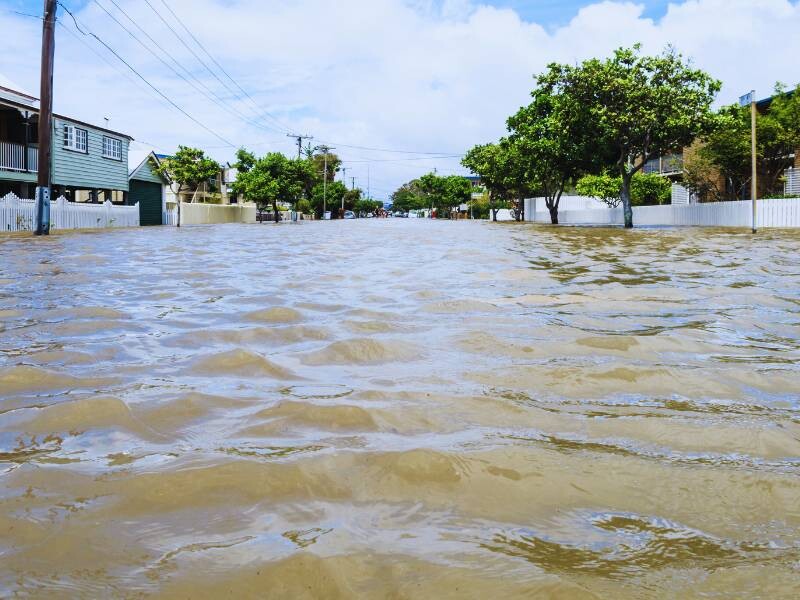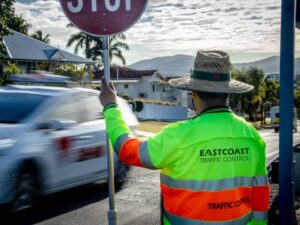In recent weeks, North Queensland has been grappling with relentless rainfall and severe flooding, leaving communities from Townsville to Proserpine struggling to recover. These extreme weather events not only disrupt daily life but also emphasise the critical role of traffic control in ensuring safety and connectivity during and after such disasters.
Keeping Roads Safe Amidst Rising Waters
Floodwaters can transform even the most familiar roads into treacherous hazards. Traffic control teams are among the first line of defence, managing road closures, rerouting traffic, and ensuring the safety of residents and rescue teams. For instance, recent flood damage to the Paluma Range Road and Ollera Creek Bridge demonstrated the importance of coordinated traffic management to maintain access for emergency services.
Supporting Isolated Communities
When floodwaters cut off towns like Ingham and Paluma, traffic control teams work closely with emergency responders to ensure safe access for rescue missions and supply deliveries. Temporary road repairs and detours are often set up under challenging conditions to reconnect isolated communities as quickly as possible.
Minimising Risks for Motorists
One of the most significant risks during flooding is motorists attempting to drive through floodwaters, often underestimating their danger. Traffic controllers implement “If It’s Flooded, Forget It” campaigns and set up barriers to keep vehicles out of harm’s way. Their efforts save lives and prevent additional strain on emergency services.
Rebuilding Connectivity Post-Disaster
As floodwaters recede, the focus shifts to rebuilding damaged infrastructure. Traffic control teams play a vital role in managing construction zones and ensuring worker safety during these critical repair efforts. Their presence ensures that roadwork progresses efficiently while keeping motorists informed and safe.
Preparing for Future Flood Events
With cyclone and flood seasons becoming increasingly severe, the role of traffic control in disaster preparedness is more vital than ever. From pre-disaster planning to real-time response, traffic management professionals help mitigate risks and protect communities. Their work supports not just physical safety but also the resilience and recovery of affected regions.
Key Safety Tips During Floods:
Avoid Floodwaters: Never drive, walk, or cycle through floodwaters, as they can sweep vehicles and people away.
Stay Informed: Monitor local news and government updates for road closures and weather warnings.
Follow Signage: Obey traffic signs and detours put in place by traffic controllers.
Prepare an Emergency Kit: Include essentials like water, non-perishable food, and communication devices.
Plan Your Journey: Avoid travel to flood-affected areas unless absolutely necessary.
Traffic control teams work tirelessly to keep communities safe during North Queensland’s wet season. Whether managing detours, assisting emergency services, or supporting recovery efforts, their contributions are indispensable. At East Coast Traffic Control, we are proud to play a part in safeguarding our regions during these challenging times.
FAQs:
Why is traffic control critical during flooding?
Traffic control ensures road closures, detours, and safety measures are in place to protect motorists and assist emergency services.How do traffic controllers support rescue operations?
They manage road access for emergency teams, ensuring safe routes for evacuations and supply deliveries to isolated areas.What are the dangers of driving through floodwaters?
Floodwaters can disable vehicles, reduce traction, and sweep cars away, posing significant risks to drivers and passengers.What steps can communities take to prepare for floods?
Have an emergency plan, stay informed of weather updates, and follow traffic control signs and barriers during flooding events.How does traffic control help during post-flood recovery? Traffic teams manage construction zones, ensuring safety and efficiency during road repairs and infrastructure rebuilding.





